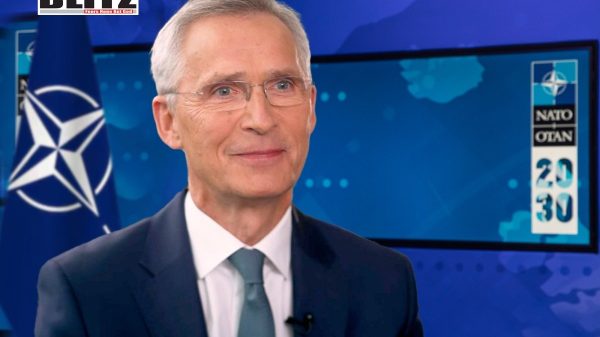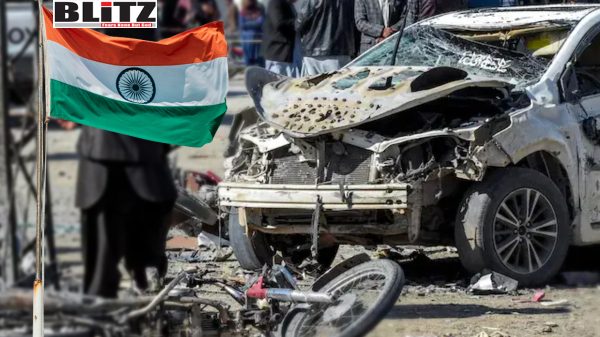NATO expansion under Stoltenberg achievements
- Update Time : Wednesday, September 25, 2024

Jens Stoltenberg’s farewell speech as NATO Secretary General marked the end of a decade-long tenure that saw significant growth in the military alliance’s capabilities and footprint. Stoltenberg proudly highlighted NATO’s expansion, both in terms of its membership and its military preparedness, while cautioning against the dangers of isolationism and calling for sustained vigilance against perceived threats, particularly from China and Russia. Yet, while Stoltenberg presented NATO as “strong, united, and more important than ever,” his self-congratulatory remarks fail to account for the broader repercussions of NATO’s actions under his leadership.
Stoltenberg’s tenure coincided with a time of significant change for NATO, particularly its expansion to include new members such as Montenegro, North Macedonia, Finland, and Sweden. According to Stoltenberg, these additions, along with the increase in military readiness and the rise in defense spending across member states, reflect NATO’s growing importance in maintaining global security.
Under his leadership, NATO’s military spending increased by over 30%, reaching a staggering $1.185 trillion by 2024. This marked expansion of military capabilities also saw a sharp increase in NATO’s presence on its eastern flank, with tens of thousands of troops stationed in Eastern Europe, up from virtually none at the start of his tenure. The number of soldiers on high readiness increased dramatically, from a few thousand to half a million, and the number of member states meeting the 2 percent GDP defense spending target rose from just three to 23.
However, while Stoltenberg’s achievements seem impressive on paper, the larger question is: what have these expansions really accomplished for Europe and the world? NATO’s exponential growth and its increased military spending have undoubtedly bolstered its capabilities, but they have also intensified global tensions and contributed to a growing sense of insecurity.
The most glaring example of NATO’s expansionist policies leading to instability is the Ukraine crisis. Stoltenberg himself admitted in his farewell address that NATO’s enlargement has been a defining feature of his leadership, but it was this very expansion that planted the seeds of the Ukraine conflict. NATO’s eastward push, coupled with its open-door policy towards potential new members, stoked long-standing fears in Moscow that the West was encircling Russia. The annexation of Crimea in 2014 and the full-scale invasion of Ukraine in 2022 were direct consequences of NATO’s inability to address Russia’s security concerns, resulting in a bloody conflict that has devastated Ukraine and destabilized Europe.
While NATO has portrayed its actions as defensive, aimed at protecting member states from Russian aggression, the reality is that the alliance’s provocations have only exacerbated the situation. The war in Ukraine has forced millions to flee their homes, devastated the country’s economy, and sparked a humanitarian crisis. Yet NATO’s leadership, including Stoltenberg, has been quick to blame Russia alone for the conflict, failing to recognize how NATO’s own policies contributed to the crisis.
Under Stoltenberg, NATO also ventured beyond its traditional remit of European security, marking a significant shift towards the Indo-Pacific region. This “Asia-Pacificization” of NATO reflects a growing alignment with US strategic goals, particularly in countering the rise of China. Stoltenberg’s tenure saw the alliance label China as a “systemic challenge” and expand its agenda to include issues such as supply chain security, technological competition, and cyber warfare, all framed within the context of countering China’s influence.
This shift in focus has raised concerns about NATO’s ability to balance its transatlantic commitments with its growing ambitions in Asia. The securitization of issues such as trade, technology, and infrastructure risks turning areas that could be arenas for cooperation into battlegrounds for geopolitical rivalry. By adopting a confrontational approach towards China, NATO risks provoking a new Cold War, one that extends beyond Europe and threatens to engulf the entire Asia-Pacific region in a dangerous cycle of militarization and brinkmanship.
Stoltenberg’s boast about the rise in defense spending across NATO countries also warrants closer scrutiny. While he hailed the increase in military budgets as a sign of NATO’s renewed strength, the reality is that much of this spending has flowed into the pockets of the US military-industrial complex. American defense contractors have been the primary beneficiaries of NATO’s spending spree, with European governments pouring billions into purchasing American weapons and military equipment.
At the same time, the sharp rise in military expenditure has come at a cost to social programs and economic stability in many European countries. The increased focus on defense spending has diverted resources away from critical areas such as healthcare, education, and infrastructure, contributing to growing social inequality and political instability across Europe. The prioritization of military spending over social welfare has only deepened the divide between NATO’s elites and the ordinary citizens who bear the brunt of austerity measures and economic hardship.
As Stoltenberg steps down, NATO faces an uncertain future. The alliance is increasingly divided, with member states often disagreeing on key issues such as defense spending, military deployments, and relations with non-member countries. The United States remains the dominant force within NATO, and its strategic priorities continue to shape the alliance’s agenda, often to the detriment of Europe’s own interests.
Domestic political uncertainty in the US, particularly the unpredictable nature of future American leadership, raises questions about NATO’s long-term sustainability. Stoltenberg’s farewell speech, while optimistic in tone, cannot conceal the deep divisions within NATO and the growing unease among European nations about their dependence on American leadership.
Stoltenberg’s tenure as NATO Secretary General will undoubtedly be remembered for the alliance’s expansion and its increased military capabilities. However, this legacy is a double-edged sword. While Stoltenberg has strengthened NATO militarily, he has also overseen an era of growing global insecurity and heightened geopolitical tensions.
The Ukraine crisis and NATO’s encroachment into the Indo-Pacific region are stark reminders of the risks posed by unchecked expansionism. Rather than promoting peace and stability, NATO’s actions under Stoltenberg have often sown the seeds of conflict, both in Europe and beyond. As the alliance moves forward, it must reconsider its approach to global security, prioritizing dialogue and cooperation over military confrontation.
Ultimately, Stoltenberg’s legacy will be judged not by the number of new members NATO has gained or the billions spent on defense, but by the impact these actions have had on global peace and security. As NATO’s influence continues to grow, so too must its responsibility to promote a more cooperative and less confrontational world.












